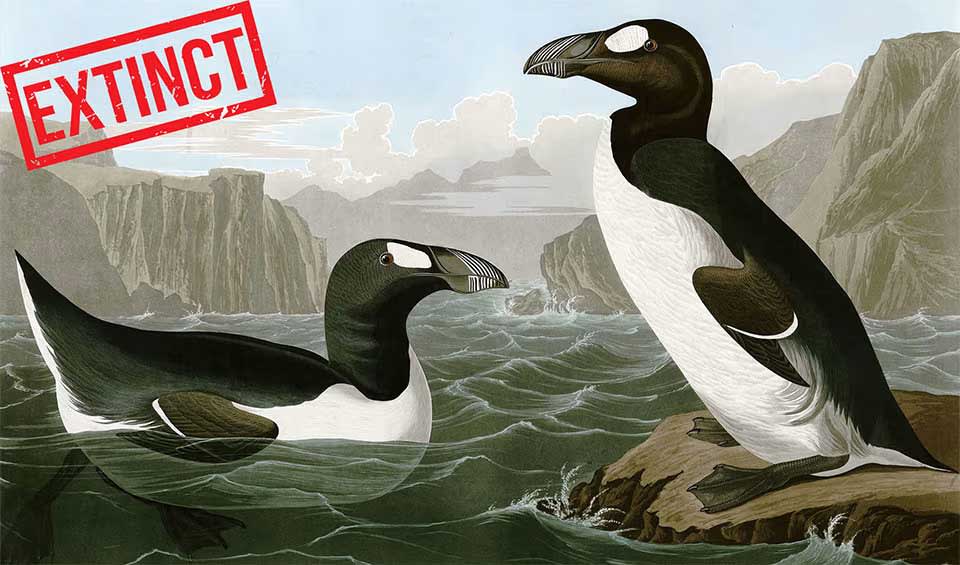The great auk was a large, flightless bird that once thrived in the cold North Atlantic waters from North America to northern Europe. It became extinct in the mid-19th century due to human exploitation and is often regarded as one of the most well-known examples of human-caused extinction in modern times.
With its striking black and white plumage, the great auk bore a superficial resemblance to penguins, which are not closely related but share similar ecological niches due to convergent evolution. The great auk’s black upperparts and white underparts were adapted for thermoregulation and camouflage in its marine environment, while its large size, believed to reach up to 75-85 cm (30-33 inches) tall, and its robust, paddle-like wings made it an excellent swimmer.
The bird’s anatomy was highly specialized for diving and swimming underwater. Its wings, though small and insufficient for flight, were powerful tools for propulsion through water, allowing the great auk to chase after schools of fish with agility. Studies of the great auk’s skeletal structure and recovered bills suggest that it was a skilled hunter capable of catching and consuming large fish, which constituted the bulk of its diet.
By the early 1800s, the great auk’s population had dwindled alarmingly. The birds were heavily exploited for their feathers, meat, and oil. As the most accessible islands were depleted of birds, the great auk retreated to more isolated breeding grounds, which ultimately did not offer sufficient refuge from human predation.
Distribution
 Canada
Canada Official estimate
Official estimate
 Faroe Islands
Faroe Islands Official estimate
Official estimate
 Greenland
Greenland Official estimate
Official estimate
 Iceland
Iceland Official estimate
Official estimate
 Ireland
Ireland Official estimate
Official estimate
 United Kingdom
United Kingdom Official estimate
Official estimate
Anything we've missed?
Help us improve this page by suggesting edits. Glory never dies!
Suggest an editGet to know me
Terrestrial / Aquatic
Altricial / Precocial
Polygamous / Monogamous
Dimorphic (size) / Monomorphic
Active: Diurnal / Nocturnal
Social behavior: Solitary / Pack / Herd / Flock
Diet: Carnivore / Herbivore / Omnivore / Piscivorous / Insectivore
Migratory: Yes / No
Domesticated: Yes / No
Dangerous: Yes / No





